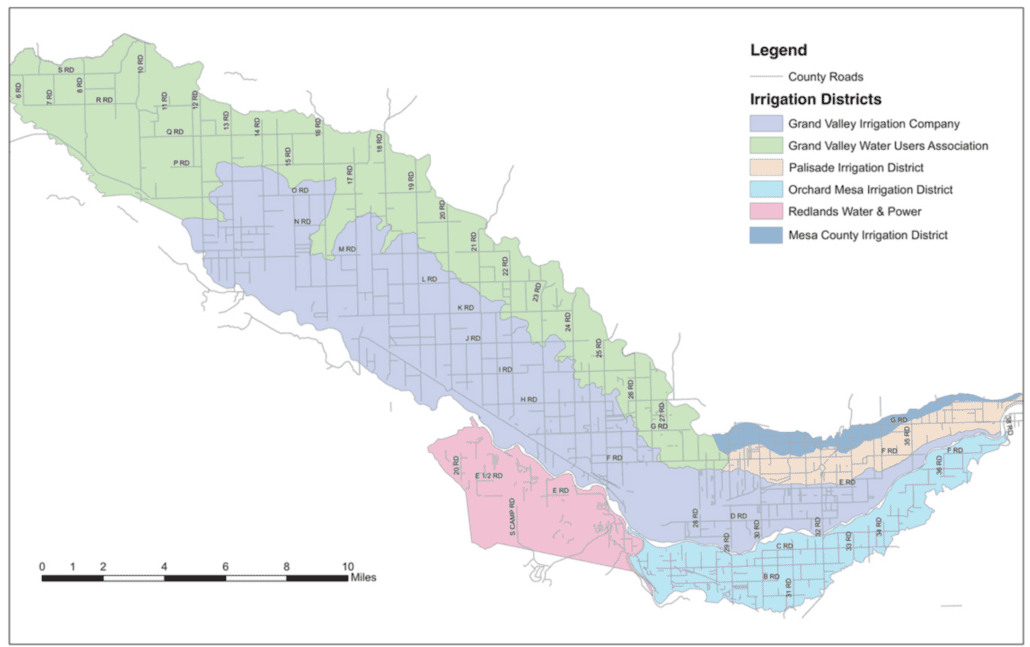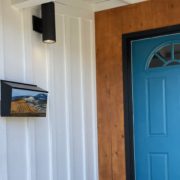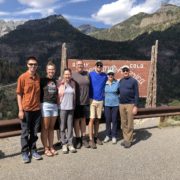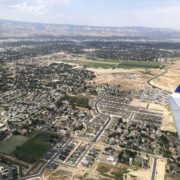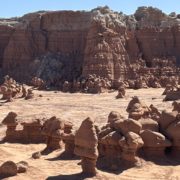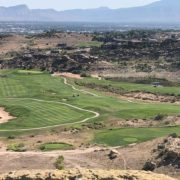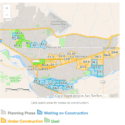Grand Junction Water Supply
If you are moving here from another state, you may be wondering about the Grand Junction Water Supply. Where does Grand Junction get its drinking water? Does it taste good? Does the city supply water for irrigation? Do homeowners have their own wells? We have learned a lot living here and I am happy to share our knowledge and experience with you. If you are considering moving to Grand Junction, call me before you come for a visit!
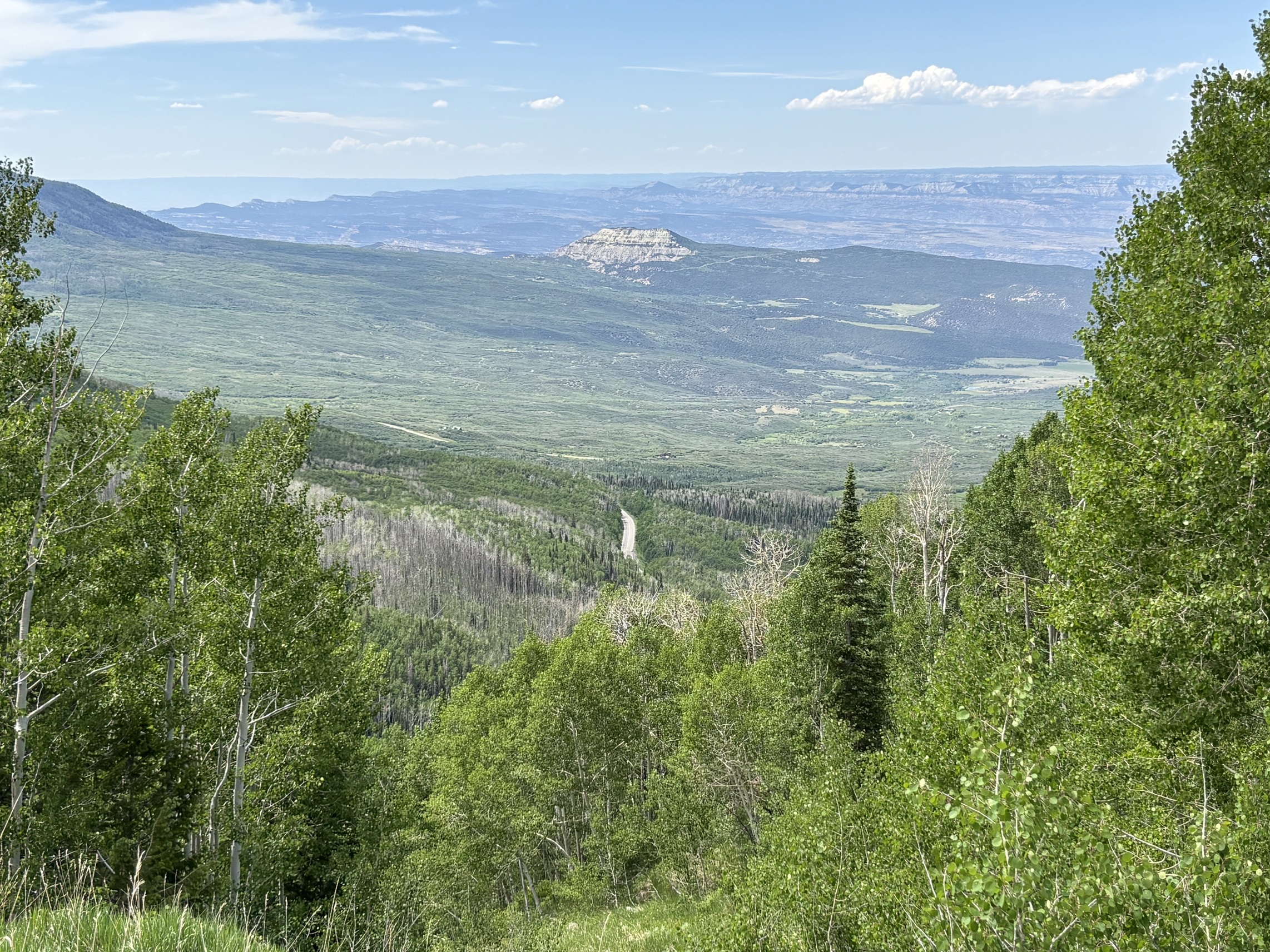
Grand Mesa overlook along Hwy 65 just past Powderhorn Ski Resort
Where Does Grand Junction Get Its Drinking Water?
Let’s start with the most popular question I get. Where does our water come from? We are lucky. We are the first ones to use the fresh snowmelt from the Grand Mesa as our drinking water. It’s stored in over 19 reservoirs on top of the Grand Mesa, the largest flattop mountain in the world just 45 minutes east of here. It comes into Orchard Mesa to be treated and disbursed into our homes. Grand Junction provides water that exceeds the minimum standards for municipal drinking water.
In 2023, Grand Junction entered a drinking water taste test in Toronto, Canada. A city in Canada won first place, but Grand Junction won second place! Essentially saying we provide the best drinking water in the United States! Please thank Randi Kim, the utilities director for the City of Grand Junction for this!
Here’s a link to the American Water Works Association’s Best of the Best Water Taste Test Competition article with details. Awarded Best in the United States.
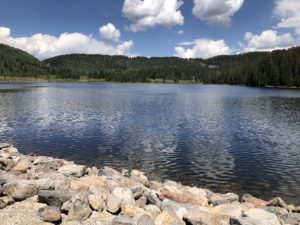
Carson Lake view from standing on the dam – Grand Junction Water supply starts here.
We have been to Carson Lake on the Grand Mesa which is at the head of the Kannah Creek Basin in the Grand Mesa National Forest. There were signs in the parking lot warning not to use motorized boats on the lake as it’s used to provide drinking water for the surrounding area. It’s beautiful. You can walk across the dam, there are trails nearby and we saw several groups fishing from the shore.
Does Grand Junction’s Water Taste Good?
YES! Every time we go to a restaurant, we order water. We drink it and it’s delicious. I can’t say that for other places we’ve visited. Sometimes their local water is so bad we need to order a pop or lemonade instead. If you currently use a home water filtration system where you live now, you probably won’t need one if you move to the Grand Valley. Try it for yourself and you’ll understand what I mean. We are thankful for our Grand Junction water supply from the Grand Mesa!
Living in Minnesota most of our water came from underground. The city built wells to access it. We got our water from our local city, and we drank it and used it to water our yard. We even had to add our own water softener because the water was “hard” and unpleasant to drink. In addition to that, we also added a Culligan water filtration system. Not here!
Where Does Irrigation Water Come From?
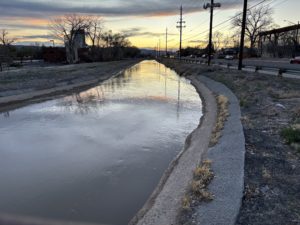
Canal along Patterson Road near 12th Street
This system was new to me. Ag water or irrigation water is different from drinking water.
If you have visited, you may have seen canals running through town and in rural areas. They look like concrete ditches. Simply put, water gets diverted from the Colorado River near Palisade. It flows through an extensive canal system serving the whole Grand Valley. Water that isn’t used for irrigation is returned to the Colorado River to serve more communities downriver. Water conservation is always encouraged. We have been in a drought for several years.
There are six irrigation districts that serve the Grand Valley. Below is a map from the Mesa County Irrigation District’s website. The City of Grand Junction has a lot of information about water on their website including water supply, treatment, and distribution.
I had a client who lived on the Grand Mesa just outside the town of Mesa and they drove to Palisade to fill their water tank (strapped inside the bed of their pickup truck) to bring water back to their property. The city’s website includes information on filling stations for those in rural areas who do not have water brought to their property.
Property Water Rights
If you buy a property here, you may have water rights or water shares. You can buy a small amount of water or more, depending on your needs. Many homeowner associations manage the irrigation water access for their neighborhood.
The Grand Valley Irrigation Company explains it very well on their website for the landowners they serve.
“The Grand Valley Irrigation Company serves a variety of land-types, including farms, farmettes, subdivisions, residences, and municipal properties. There are 48,000 shares of capitol stock held by over 3,000 shareholders. Each share of water gives the owner the right to approximately 4.6 gallons per minute. This is not a storage right, meaning that the water right does not accumulate and store up when it is not being used. It is a direct flow right, meaning that 4.6 gallons per minute can be drawn at any particular time to be put to beneficial use.
GVIC levies an assessment, or bill, annually on all shareholders. The first share owned by every account is designated as an A share. Each account has only a single A share. Any additional shares owned by a shareholder are categorized as B shares. There is no difference between an A or B share with regard to the water right that is granted. Both types of shares entitle the shareholder to 4.6 gallons per minute. Rather, an A share is assessed, or billed, annually at a higher rate than a B share.
For the 2025 irrigation season, an A share is assessed at $342.64 and a B share is assessed at $16.39.
As an example, if a shareholder owned 5 shares the annual assessment would be calculated as follows: $342.64 + ($16.39 x 4) = $408.20. The annual water assessment is sent out in early January and payment is due in full by April 1.”
Grand Junction Water Conservation
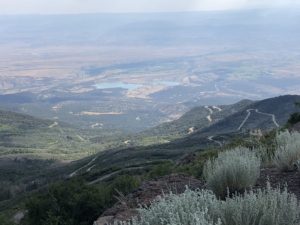
Standing on the Grand Mesa looking down into the Kannah Creek watershed, you can see Land’s End curvy gravel road that’s closed in winter!
If I kept going, I could write another 1,000 words about water conservation in the Grand Valley and Colorado in general. The city and county have conservation initiatives. There are many local, regional, and state nonprofit organizations, districts and institutions who help preserve this precious natural resource.
As a Colorado resident, we try to conserve water. We know that the water from the Colorado River flows southwest to serve Utah, Arizona, Nevada and California residents with water too.
We are thankful our Grand Junction water supply for drinking water comes from Kannah Creek and the Grand Mesa. When you are here, consider a visit to Carson Lake. It’s sort of near the Land’s End Observatory, an outstanding overlook of the entire Grand Valley, best experienced at sunset! I mention it in my post called What It’s Link to Live on the Grand Mesa.
Move to Grand Junction, we’re waiting for you!
Text/Call me at 612-306-9558
Contact me directly regarding non-MLS listings.
PAUL ASPELIN, REALTOR®
GRI, SRES®, CNE
Licensed in Colorado
Connect with me on LinkedIn or send me an email.
Learn more about my real estate experience and how I serve my clients
© 2025 Paul Aspelin, REALTOR®. MovetoGrandJunction.com Copyright protected. All rights reserved.


